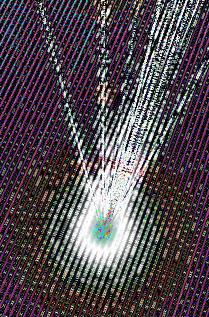New record for chip tech
 Australian researchers have set a new standard of precision for making quantum computer chips.
Australian researchers have set a new standard of precision for making quantum computer chips.
A team of UNSW quantum computing engineers, in close collaboration with colleagues at the University of Melbourne, has broken a record by showing that phosphorous ions can be implanted in silicon crystal with 99.95 per cent confidence, while at the same time being precisely located within the chip.
The achievement is significant because the manufacturing method, based on ion implantation, is the same as that already used today to make the binary bits in conventional computers.
It thus offers a flexible and scalable way to fabricate donor qubits for quantum computers without having to ‘reinvent the wheel’.
The UNSW team of Prof Andrea Morello is a leader in the development of silicon quantum bits based on the spin of individual phosphorus atoms in silicon. These are exceptionally good qubits – they support high-fidelity quantum operations, and hold quantum information for long periods of time – but fabricating them reliably poses a technical conundrum.
In order to have high confidence that the atom has been placed in the crystal, many have attempted to accelerate it into the chip with a high energy. However, a high-energy atom shot into the chip will have a large uncertainty in the position where it finally stops.
New research, led by Dr Danielle Holmes, shows a way to resolve the conundrum.
Instead of implanting a phosphorus ion by itself, the team implanted the molecular ion PF2+, where phosphorus (P) is accompanied by two fluorine (F) atoms.
The molecule is shot into the chip at a high energy, which allows detecting the impact with 99.95 per cent confidence. However, less than half of that energy belongs to the P atom.
The molecule breaks apart as soon as it hits the surface of the chip, and from there, the P atom travels slowly and comes to a rest in a well-defined position.
Furthermore, the researchers were able to prove that “the two stray fluorine atoms do not pose any problems to the operation of the phosphorus quantum bits”, according to Benjamin Wilhelm, a UNSW PhD student who performed the quantum measurements.
After the implantation, the device is subjected to a quick (5 seconds) very high-temperature process (1000℃), which makes the F atoms diffuse away, whereas the P atom remains in place.
By increasing the placement precision without compromising on the detection signal, “we can have our cake and eat it too”, Dr Holmes says.
The full study is accessible here.







 Print
Print